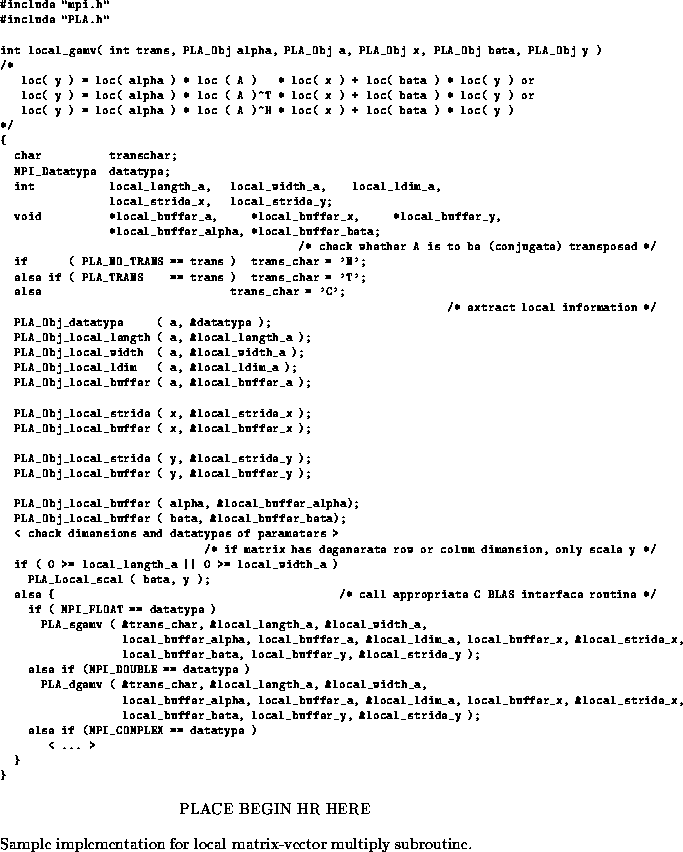
PLAPACK provides two more layers of level-2 BLAS: the local level-2 BLAS and the global level-2 BLAS, with identical parameter sequences. For the general matrix-vector multiply, the calling sequences are given by place HR here

![]()

place HR here
Parameter TRANS has been replaced by
integer trans, which can take on
the values indicated in Table ![]() .
All other parameters are now passed as part of linear algebra
objects alpha, a, x, beta, and y.
.
All other parameters are now passed as part of linear algebra
objects alpha, a, x, beta, and y.
PLACE BEGIN HR HERE [tbp]

PLACE BEGIN HR HERE
Valid values for integer parameters uplo, trans, and diag.
PLACE END HR HERE
When a node calls PLA_Local_gemv, the operation
is equivalent to
extracting the local information (datatype, dimensions, and pointer to the
buffer) and locally performing the general matrix-vector multiply.
The local dimensions of alpha and beta must be ![]() ,
but they can be of any object type.
The local dimensions of a, x, and y must be such
that the operation is well-defined. All objects must have the same datatype.
To best understand the operation
of this call, see the sample implementation given in Figure
,
but they can be of any object type.
The local dimensions of a, x, and y must be such
that the operation is well-defined. All objects must have the same datatype.
To best understand the operation
of this call, see the sample implementation given in Figure ![]() .
.
PLACE BEGIN HR HERE

PLACE END HR HERE
Notice: no communication is performed as part of this call. Thus, all information must be locally available.
All nodes must simultaneously call PLA_Gemv, which performs
the BLAS call on the distributed objects.
Parameter trans now indicates is the global matrix A is
to be (conjugate) transposed for the operation.
Parameters alpha and beta must
be ![]() multiscalars. Parameter a must be of object type
matrix. Parameters x and y
must all be of object type vector or (duplicated) projected
vector.
The global dimensions of the different objects must be such
that the operation is well-defined.
multiscalars. Parameter a must be of object type
matrix. Parameters x and y
must all be of object type vector or (duplicated) projected
vector.
The global dimensions of the different objects must be such
that the operation is well-defined.